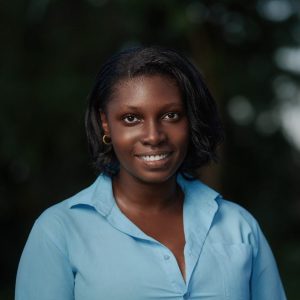A Place of history, culture, and creativity
A FEELING of serenity and the presence of the past are the first things that strike visitors to the famed Fort Island. A historical focal point of Guyana, Fort Island is one of Guyana’s most well-known destinations. Home to Fort Zeelandia, the stone walkways and overhanging trees create an experience that offers a glimpse into the past.
A small community with an estimated population of just 60 people, Fort Island’s visitors miraculously outnumber its residents. Today, this little plot of land on the Essequibo River has developed into an island unto itself, with tourism on the constant rise. Most come to see the stone structure and the cannons left behind from colonial times, but life is very different for the people who call Fort Island home. Recently, the Pepperpot Magazine took a trip over the river and, through time, to delve into the village beyond the Fort.
Mohamed Nazam was led to Fort Island more than 20 years ago. Since then, he has dedicated himself to learning about the mysterious island, its people, and its true origins. Born and raised on a different island in the Essequibo, Mohamed moved to Fort Island because of one thing: His wife.
As he explained, “Well, I came here through my wife. My wife is a teacher, and she got a job here on Fort Island, so we had to move. And then again, my grandparents had some land here, which I am occupying now. And none of them came to claim it.” With the land, opportunities to work, and his wife by his side, Mohamed decided to settle on Fort Island, which was still finding its place, and was nowhere near what it is today.

In years gone by, Fort Island was inhabited by very few people. The island is three miles long, and boasts a modest mile-and-a-half in width, making it one of the smallest in the region. Despite its size, Fort Island still houses a rather comfortable way of life for its people. With solar electricity and wells, the people of Fort Island are as close to self-sustainability as possible. The village is home to about sixty people who are involved in various diverse fields, crafting a ‘mini township’ of their own.
As Mohamed explained, Fort Island, although home to few, is home to hardworking and innovative people. As he shared, “This is just a clustered community, you know. But they hold nearly more than three-quarters of the population. People have their livestock, pasture, and some do a little crop farming. But it’s just a little handful of us along this island. It’s like a little bit of a cluster like that.” Although there may not be much to traverse and see beyond the Fort on the island, it seems to be more than enough for most people.
Most of Mohamed’s time on the island was spent learning more about the little island that seemed shrouded in mystery. Throughout the years, he has garnered little-known information about the island, and has become the go-to man for information, facts, or just interesting tales about the age-old island. He shared a few lesser-known facts about his home. The first interesting fact is the island’s original settlers. As he stated, “Fort Island was actually settled by the Amerindians before the coming of the Dutch. The Dutch migrated from Kyk-Over-Al to Fort Island during the 10th to 13th Centuries. Why they migrated was because the land at Kyk-Over-Al was not suitable for production.”

He further added that the first thing that brought the Dutch to Fort Island was the soil. Although historically a military base, it was also a profound farming community. As he stated, “But the coastline of Guyana was very productive. So they migrated to Fort Island somewhere in the 1730s, 1740s. The idea of migration was strictly for sugarcane cultivation.” Mohamed further explained the little-known fact that today’s beloved Fort was not the first of its kind, but rather a greater architectural feat than previous attempts. “We already had a wooden fort at the northern part of this island, but that wasn’t in good condition. The Dutch and their company started building the Fort. This Fort was built first, and then that Fort was demolished.”
Another interesting aspect that Mohamed looked at was the Dutch-British relationship. As he shared, the Dutch encouraged building a relationship with the British, however, this did not end the way the Dutch had intended. “The Dutch used to encourage the white planters or the Englishmen to come and settle. They were not even paying taxes because of sugar production. By 1792, the English plantation owners outnumbered the Dutch plantation owners.”
Moreover, according to information from Mohamed, Fort Island housed countless other Dutch architectural structures. As he shared, “Fort Island had a big architectural structure which was destroyed. It was a windmill. Coming down in the late 17th Century, they didn’t have this kind of steam machine. We had a windmill here that the Dutch built.” To Mohamed and a special few others on Fort Island, their community is far more than tourists have the privilege of experiencing, making it a unique home they would not trade for the world.
Tourism, like the spirit of the people of Fort Island, has never died. The island has seen various developmental improvements. As Mohamed explains, Fort Island seems to be on a steady rise with just a few kinks to work out. “Since 2021, when we had good roads, and the code of policy and everything started receding, we have had an influx of tourists.” Fort Island is one of a kind, and if you are thinking about a trip to the island, be sure to look beyond the stone walls of the Fort, and get to know the community at its heart.



.jpg)







